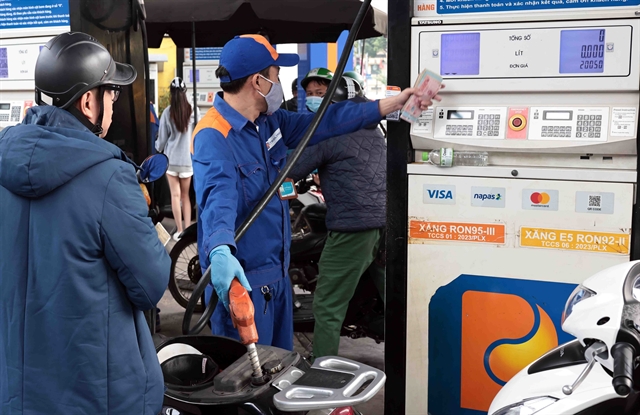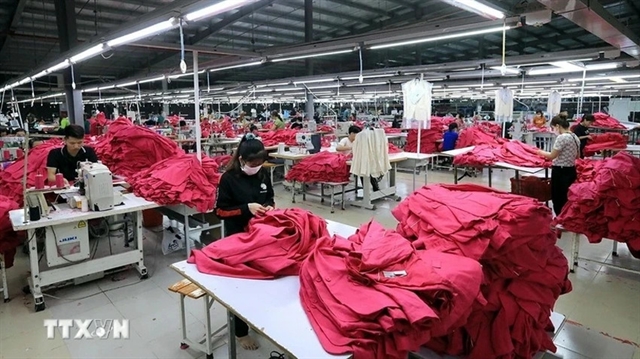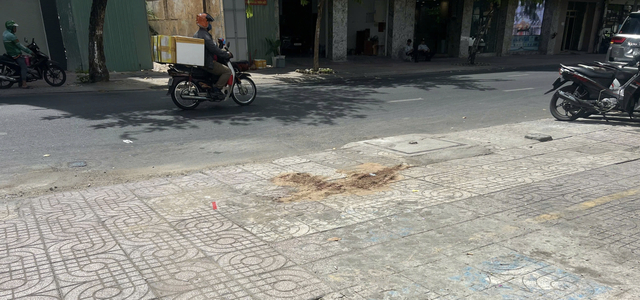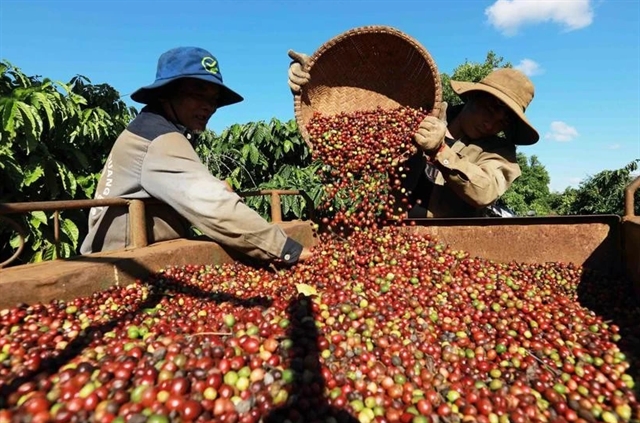 Features
Features
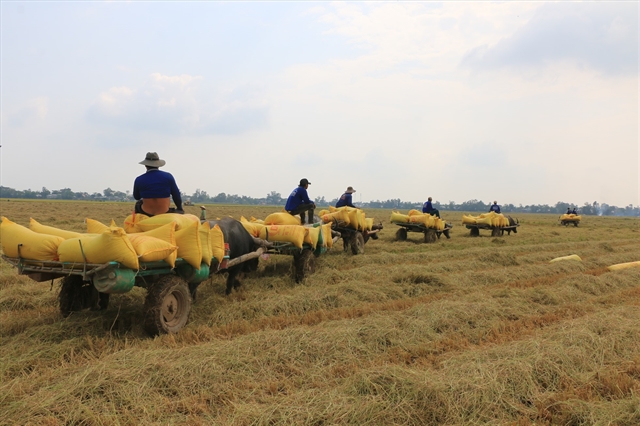
The Vietnam International Fashion Week returns next weekend to showcase the latest collections by Vietnamese and international designers in what can be regarded as the country’s best efforts to put forward the best of its young and exciting fashion industry.
(1)81311136PM.jpg) |
| Merging styles: Leaping the Dragon’s Gate. — Photo courtesy of VIFW |
By Nguyễn Mỹ Hà
The Vietnam International Fashion Week returns next weekend to showcase the latest collections by Vietnamese and international designers in what can be regarded as the country’s best efforts to put forward the best of its young and exciting fashion industry.
Designer Vũ Việt Hà draws his inspiration from the Vietnamese folklore story about "Leaping the Dragon’s Gate".
“This is a Vietnam Fashion Show, so I wanted to bring to it a great story of a carp turning into a dragon as it leaps over the dragon’s gate. It is also my concept for our current fashion scene that has been accumulating experience over a number of years to make a big leap and develop to the next level,” he tells Việt Nam News Sunday.
50111136PM.jpg) |
| Modern twist: Designer Vũ Việt Hà collaborated with Ngọc Lan House for the new collection. — Photo courtesy of VIFW |
“It is also an image of Vietnamese people overcoming their own limitations to grow bigger and stronger. And the ornate decorations and colours, drawn from traditional folk paintings, will be sewn into the strong cuts of classic western suits, blending modern style and tradition. It shows the merging of cultures, a rendezvous of the past and future with an updated touch of fashion trends for 2019.”
Vũ Việt Hà will showcase his collection on the first night of the three-day fashion week, starting on October 25, next Thursday.
“You will see in my collection a Vietnamese man dressed in western suits from the 1930s, a modern young gentleman strolling the streets of Paris or Milan, or another Vietnamese man with striking Asian features. His looks combine the future trends, colours and style of 2018 transitioning into 2019.
“You will see the flow of style in this collection from the first suit until the last. It is a collection I’m really proud of,” he says.
Fashion is not just clothing, fashion reflects the culture and how cultural depth and sophisticated layers of a designer are embedded in his or her collection.
36111136PM.jpg) |
| Past and future: A modern man donning an outfit inspired by tradition. — Photo courtesy of VIFW |
From garment exporter to fashion designer
Việt Nam has been trying hard to step above its current role as the manufacturer of the world’s bigger and more established brands. The past ten years has seen steady growth in garment exports from Việt Nam to Europe and North America.
The year 2017 saw record garment exports at US$31 billion, and trade surplus setting a record high at $15.5 billion.
Early warnings at the beginning of 2017 suggested that the US withdrawal from the Trans-Pacific Partnership (TPP) agreement would narrow the pathway for garments from Việt Nam.
After struggling for the first six months, garment companies scored a record high of exports to the US toward the end of the year. Garments topped the export list in 2017 and gave more hope for the country’s export prospects in the coming year.
Garment exports to China in 2017 also surpassed the $1 billion mark, extending the market beyond Việt Nam’s traditional garment destinations in ASEAN countries, eastern Europe, the EU, Japan and South Korea.
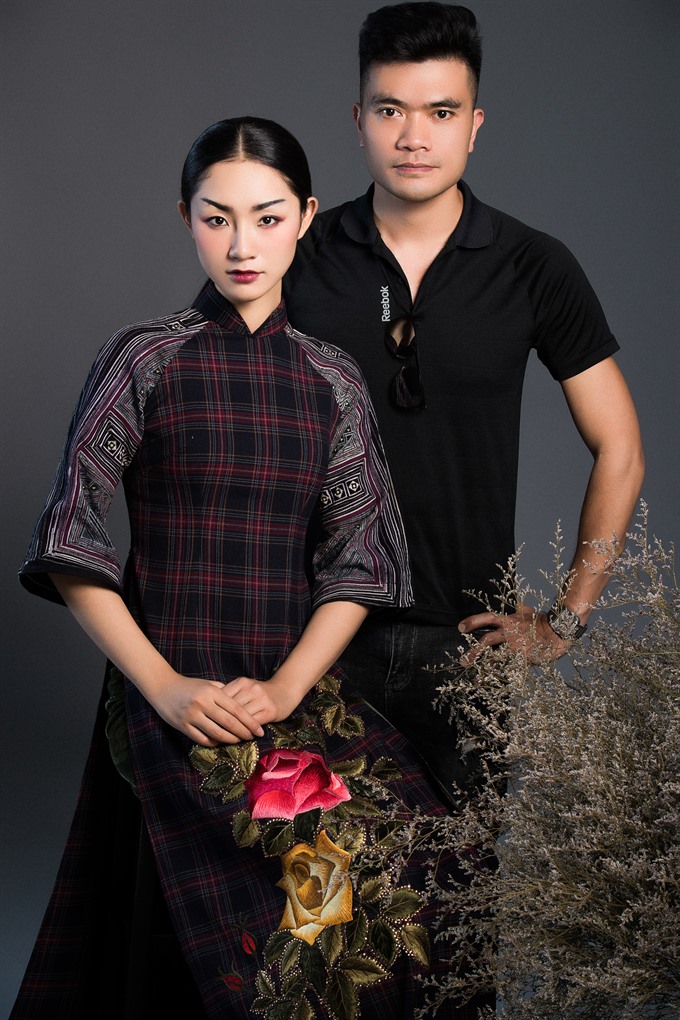 |
| Inspiration: Designer Vũ Việt Hà (right) and his muse. Photo courtesy of the designer |
According to Vinatex, the country’s government-owned and largest corporation by investment capital and turnover, garment export targets are set at over $35 billion in 2018 and an even more ambitious target of $40 billion in 2019.
As the garment companies are growing stronger in exports, there is still a large domestic market that has not been tapped.
Vinatex CEO Cao Hữu Hiếu estimates, “With over 95 million people and an average GDP per capita of $2,343, the garment retail market in Việt Nam holds enough potential for a stronger market.
“If each person spends $50 a year on clothing, then we have a sizeable market of between $4 billion and $5 billion. There is appeal not only for international clothing lines seeking a market berth in Việt Nam, but also a challenge for domestic companies not to lose their home ground.”
Hiếu goes further in explaining why now is a good time for domestic companies to join the local clothing market.
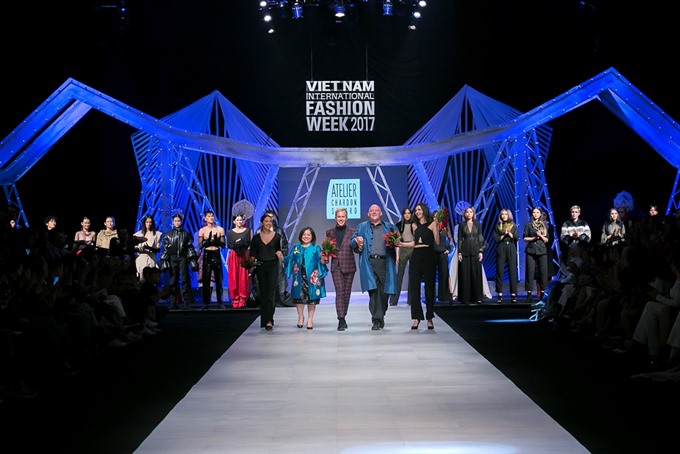 |
| On the catwalk: A collection from French Fashion Institute Atelier Chardon Savard from France in 2017. — Photo https://vifw.vn |
“If Vietnamese consumers 10 years ago preferred fast fashion imported from China, now they tend to turn to made-in-Việt Nam products for better quality,” he says.
Vinatex member companies such as May 10, Việt Tiến or Đức Giang have built a reputation for themselves in exporting garments to Europe, Japan and ASEAN countries. Turnover has reached hundreds of billions of đồng, which they in turn invest in opening retail shops in the country and making their names and brands known to average local consumers.
Hiếu cites a series of reasons explaining why garment companies have not been able to establish a firm foothold in the country.
Local preference of foreign brands, competitive prices and fabric quality and designs are topping the list.
“It’s not easy for export-oriented companies to set up their sales boutiques because they need to deal with PR, marketing campaigns and after sales service,” Hiếu writes.
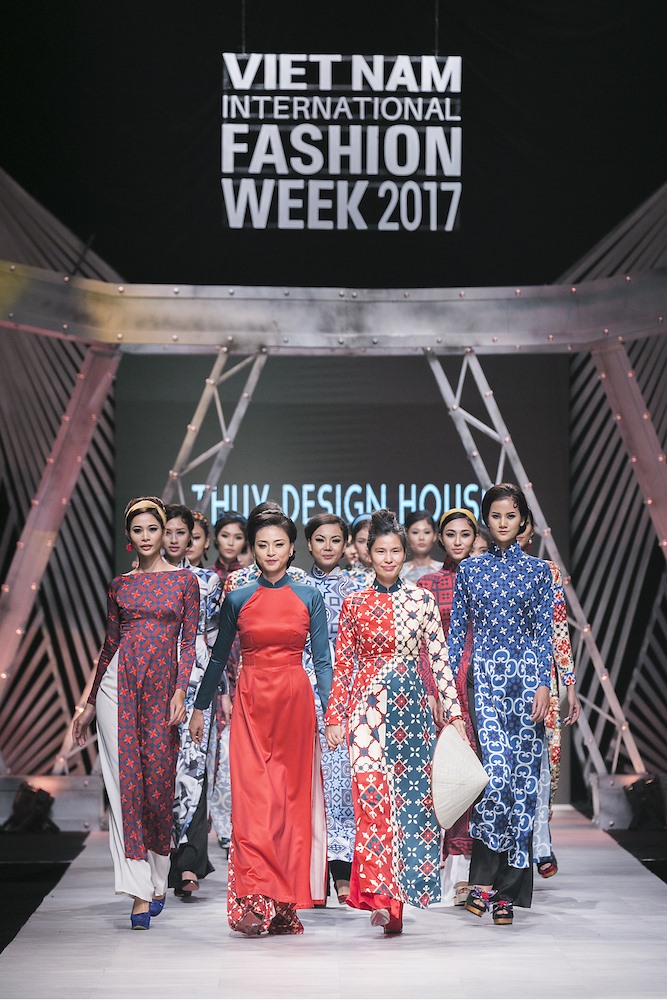 |
| Street wear: The áo dài collection by Thủy Nguyễn starring in the VIFW 2017 started a cross-country vogue of áo dài returning to office and street wear. - Photo https://vifw.vn |
Another reason contributing to the less secure production output is the material resources.
“Domestic fabric production makes only 2.3 billion metres a year. Meanwhile, the total industry requires 8.7 billion metres to function, so the rest comes from import,” Hiếu says.
Another garment industry insider, who declined to be named, adds, "We still do not have a group of supermarket purchasers, who browse garment and fashion collections every season to put together a good mix of products at each shopping mall or supermarket. Right now, they only lease the space and it depends on the clothing companies to rent it for sales purposes."
Just last May, a pioneering attempt to lead the blooming local brands market was made in a building in downtown Hà Nội. Dubbed by fashionistas as the mini version of iconic Saks Fifth Avenue in New York City, the Vinatex Fashion Centre puts together top brands of the corporation in one spot. Earlier, another attempt to put local brands in the Việt Nam Fashion House ended in failure.
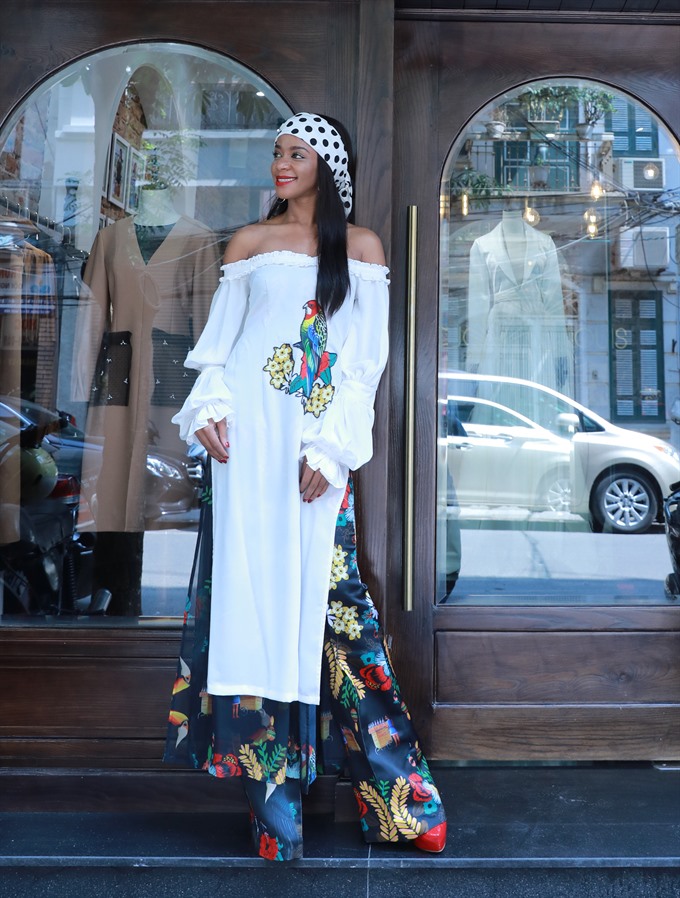 |
| Blank canvas: Haitian designer Jovana Benoit draws inspiration for her creations from the Vietnamese ao dai dress and other ethnic minority outfits. — VNS Photo Trương Vị |
Branding fashion
Designer Hà has spent over 10 years participating in Việt Nam Fashion Week each season. “I still remember the collection I had in 2005, when I knew it was not going to be good from the minute the models donned my outfits. It was a disaster, as I was young and put every investment I had into that collection,” he says.
Hà was then a fresh graduate, and took every chance he had to produce a collection and took part in any event he was invited to.
Things are quite different now at the upcoming Vietnam International Fashion Week
“Now, I’m paid to participate in the upcoming show,” he says with an obvious sense of pride. “Like the carp having to jump through dragon’s gate to transform themselves, I believe Việt Nam’s fashion industry has been growing, developing the energy to let designers leap and flourish.” — VNS



